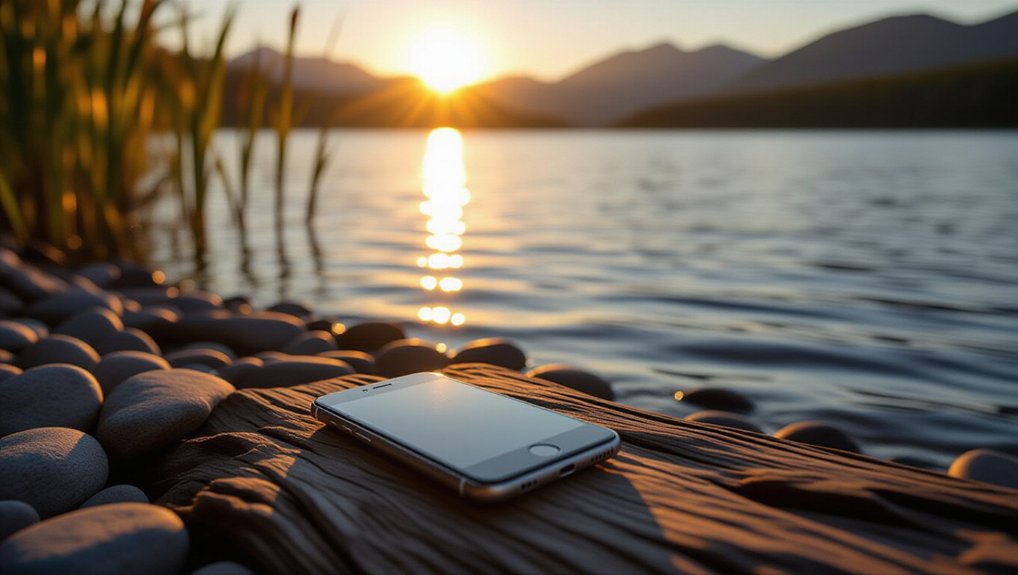You’ve probably felt that nagging urge to check your phone countless times throughout the day, even when you know there’s nothing new waiting for you. On July 9, I decided to break this cycle completely—no Instagram, no Twitter, no TikTok for an entire 24 hours. What started as a simple experiment quickly revealed something unexpected about the way our minds work when we’re truly disconnected from the digital noise that surrounds us.
Why Take a Break From Social Media Platforms

While scrolling through endless feeds might feel productive, you’re actually training your brain to crave constant stimulation and instant gratification. This constant input disrupts your ability to focus deeply and think creatively.
You’ll notice your attention span shrinking as you become addicted to the dopamine hits from likes, comments, and notifications.
Taking a break allows your mind to reset and rediscover sustained concentration. You’ll sleep better without blue light exposure and late-night scrolling sessions.
Your self-esteem improves when you’re not constantly comparing yourself to others’ highlight reels. Real-world relationships strengthen when you’re fully present instead of documenting every moment.
You’ll reclaim hours of time for meaningful activities like reading, exercising, or pursuing hobbies that genuinely fulfill you.
Preparing Your Mind and Environment for the Challenge

Before you dive into your digital detox, you’ll need to set yourself up for success by creating both mental and physical barriers between you and your devices. Start by informing friends and family about your challenge so they won’t expect immediate responses.
Delete social media apps from your phone temporarily or move them to a hard-to-reach folder. Turn off all non-essential notifications and enable “Do Not Disturb” mode.
Mentally prepare by identifying your usual triggers for social media use. Are you bored? Anxious? Seeking validation?
Plan alternative activities like reading, exercising, or calling a friend. Create a physical environment that supports your goal by placing devices in another room during meals and before bedtime.
Stock up on books, puzzles, or art supplies to keep your hands and mind occupied.
What to Expect During Your 24-Hour Digital Break

Once you begin your 24-hour digital break, you’ll likely experience a range of emotions and physical sensations that might surprise you.
Initially, you’ll feel phantom vibrations from your phone and an urge to check notifications. This digital withdrawal can trigger anxiety, restlessness, or boredom within the first few hours.
As the day progresses, you’ll notice increased awareness of your surroundings. Colors appear brighter, conversations feel deeper, and you’ll hear sounds you’d normally miss. Your mind will wander more freely without constant digital stimulation.
Expect moments of discomfort when facing silence or waiting periods without entertainment.
However, you’ll also discover newfound mental clarity and creativity emerging. Many participants report better sleep quality and reduced eye strain by evening’s end.
Alternative Activities to Fill Your Newly Found Time

Without your usual digital distractions, you’ll have 8-16 hours to rediscover activities that genuinely engage your mind and body.
Pick up that book you’ve been meaning to read, or start journaling about your thoughts and experiences. Try cooking a new recipe from scratch, organizing a neglected space, or tackling a creative project like drawing or crafting.
Step outside for a walk, run, or bike ride to reconnect with nature. Visit friends or family for face-to-face conversations you’ve been postponing.
Learn a new skill through hands-on practice rather than YouTube tutorials. Play board games, solve puzzles, or practice meditation. Garden, clean, exercise, or simply sit quietly and observe your surroundings without documenting them.
Handling Withdrawal Symptoms and FOMO

As you progress through your digital detox, you’ll likely experience genuine withdrawal symptoms that mirror addiction recovery.
You might feel restless, anxious, or compulsively reach for your phone without realizing it. These reactions are normal and temporary.
FOMO (fear of missing out) will hit hardest during the first few hours. You’ll worry about important messages, breaking news, or social updates.
Combat this by reminding yourself that truly urgent matters will find you through other channels.
When cravings intensify, acknowledge them without judgment.
Take deep breaths, engage in physical movement, or practice mindfulness.
Remember that these uncomfortable feelings prove how much you needed this break.
Each wave of discomfort you ride out strengthens your ability to exist independently from digital validation.
Tracking Your Mental and Emotional Changes

While navigating your digital detox, you’ll want to document the shifts happening in your mind and emotions. Start by noting your baseline mood before beginning the challenge.
Throughout the day, check in with yourself every few hours and record what you’re feeling. You might notice increased anxiety initially, followed by unexpected calmness. Many people experience improved focus, clearer thinking, and reduced mental fog.
Pay attention to your sleep quality, stress levels, and overall energy. Use a simple journal or voice notes to capture these observations. Don’t overthink it – just record honest snapshots of your mental state.
Notice if you feel more present during conversations or activities. These insights will help you understand your relationship with social media and guide future decisions about digital consumption.
Making the Most of Your Offline Experience

Since you’ve committed to stepping away from screens, it’s time to rediscover the richness of offline activities that’ll fill your newly reclaimed hours.
Start with physical movement—take a walk, stretch, or try yoga. Your body has been craving this break from sitting and staring.
Engage your hands in creative work: sketch, write in a journal, cook a meal from scratch, or tackle that craft project you’ve postponed.
These activities activate different parts of your brain and provide tangible satisfaction.
Connect with people face-to-face. Call a friend, have an actual conversation with family members, or visit a neighbor.
Read a physical book—notice how your focus deepens without digital distractions pulling your attention away every few minutes.
Conclusion
You’ve completed your 24-hour digital detox challenge, and you’ve likely discovered something powerful about yourself. The initial anxiety and phantom vibrations you experienced have given way to clearer thinking and deeper connections. You’ve proven you don’t need constant digital stimulation to feel fulfilled. Take these insights forward—you now know you can reclaim your time, focus, and authentic relationships whenever you choose to disconnect.


